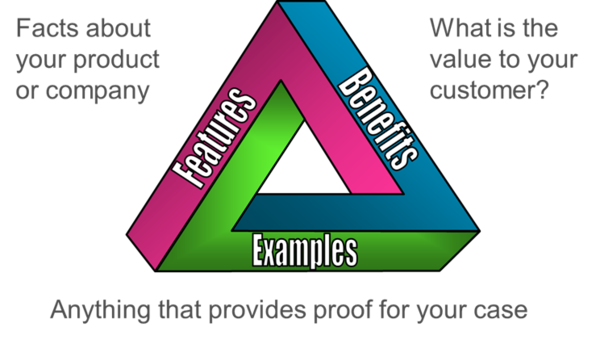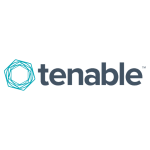Whether you are a partner (ie. VAR, MSP, SI, etc) selling to end-users, or a vendor promoting your technology to the channel, are you selling genuine benefits or simply selling advantages? More importantly, do you know the difference, and the enormous impact this has in helping you close business?
In this article, we look at the differences between features, benefits and advantages, and the role they play in the sales cycle. We explore how their ability to influence is affected by other factors such as time, cost, complexity, and customer expertise. Finally, we look at when to use each type of statement to have the greatest impact in establishing credibility with customers (whether you are selling to end-users or partners)
First of all, let’s establish a clear definition of the differences between a Feature, a Benefit, and more importantly, an Advantage.
Features vs. Benefits vs. Advantages
We’ll begin with the definition of “Feature”. Features are simply facts or information about your product or service. Most sales people can spot features fairly easily when it comes to products, but less so when it’s related to services. For example, “our Tri-Band Wi-Fi Router delivers speeds of up to 5300Mpbs” is a clearly a feature statement. It may be useful for someone who is looking for a fast Wi-Fi router, but it’s completely useless if they were really after a 225 Gbps firewall. Regardless, it is a feature. What’s interesting however, is how often sales people make feature statements when describing services, under the mistaken impression that they are actually making a benefit statement. For example, “we provide 24/7 support” is a feature, not a benefit. We’ll come back to this later, but for now, let’s look at the more difficult distinction between benefits and advantages.

Again, whenever we practice this exercise in our Channel Sales training, most people can easily define a benefit. A benefit is an aspect of your product or service that is of value to the customer. For example, a statement like “our backup software has built-in compression, which reduces your storage requirements, allowing you to use less disk space” would generally be regarded as a benefit. However, here is where I need to clarify the difference between a benefit and an advantage
- A benefit statement is one where the buyer has expressed a specific need or requirement
- An advantage statement is one where the seller has assumed that the buyer has a need or requirement
In other words, taking our previous examples, if the customer has not specifically expressed a desire to use less disk space, or expressed a need for 24/7 support, then the previous statements are in fact advantages, not benefits. As an example, if I am a small business that only operates 9:00-5:00/Mon-Fri, a statement like “24/7 support” may have a detrimental effect, if I perceive it as something I am paying for and don’t need. The significance of this is that customers, whether end-users or partners, are far more likely to be influenced by benefit statements than by advantage statements
So the challenge for us as salespeople is to uncover what the customer actually needs, before we start talking about the “benefits” of our products. And that can be difficult when the customer has expressed a problem and we believe we have the solution (even though we may not have spent the time to really understand the customer’s needs properly).
Take the scenario where a customer makes the comment “I’m sick of our ERP software – it’s really slow”. Now, if you sell hardware, you might be tempted to think that the solution lies in upgrading their servers or client devices. If you sell networks, you might think the problem is related to throughput on their LAN or WAN. If you sell competitive ERP software, you might be inclined to talk about the benefits of your product versus what they currently have. However, delving more deeply into the customer’s comment, we may in fact discover that the real problem is that a lack of training has resulted in staff not knowing about the predefined “shortcut” functions which make data entry quicker.
While I imagine there would be a number of sales people reading this and thinking “that’s obvious – the rep didn’t do their homework”, I am constantly surprised at how often experienced sales people fall into this trap. It is especially prevalent when a sales rep is extremely passionate or enthusiastic about the products and can’t wait to describe how their solution will help a customer. The other instance where I see this behaviour is when sales reps are so accustomed with similar situations, that they go into autopilot mode without stopping to think that this situation may in fact be different.
What’s the big deal?
You may be thinking “OK … I get the distinction, but it’s very subtle… does it really make a big difference?” The answer is absolutely YES, especially as deals become larger and more complex.

Think about your decision-making process when you are a buyer. Imagine first that you are buying your lunch. You look at the sandwich board and see “smoked turkey, brie, cranberry and alfalfa” for $10.95, and you order at the counter. In effect, you just purchased a product purely on features.
Now take a different scenario where you are part of a committee of five people organising a banquet for 1,000 people. You have to think about other factors beyond the actual food such as the venue, entertainment, alcohol and seating arrangements, not to mention managing internal conflicts within your own committee. So someone selling to you by simply talking about the quality of the food is completely missing the mark if they haven’t uncovered all your other needs. In other words, the larger or more complex the sale, the smaller the role that the actual product plays in the decision-making process.
The same thing applies when dealing with partners. The partner will say “I want a better price” or “I need a higher margin”. But by delving deeper into their real requirements, especially for large or complex sales, we realise that there may be other factors that need to be considered. Customer credibility, after sales support, staggered delivery, and/or an annuity based financial model may also be crucial in helping them secure the deal (even if they don’t have lowest price). Taking the time to understand their hidden needs is the only way to ensure you can deliver genuine benefits that make a partner want to work with you.
Does that mean I should stop talking features?
Absolutely not! Feature, and advantage, statements are both incredibly powerful when used at the right time.
Feature statements are crucial in proving that the product or service can meet the customer’s requirements. In addition, feature statements are important when selling to an experienced or knowledgeable buyer. For example, taking the case above, the last thing I want when I am buying my lunch every day is someone describing how the low fat content will keep me looking slim and trim or that the unbleached wrapping paper they use is reducing global warming. That’s because I already know the benefits
Similarly, if you are presenting (say) a Unified Communications solution to a technical buyer, they would be happy if you focused on features (eg. protocols, infrastructure compatibility, provisioning process, compliance, etc), whereas, if you are speaking to the CEO (who is not technically literate) then you would need to explain benefits (eg. reduced travel and training costs, ability to scale as your business grows, better customer interaction, etc), and give them an example of where you’ve done it before. In other words, the more expert a buyer is in the technology you are describing, the more they rely on features to make a decision, whereas the less expert they are, the more they rely on benefits.

But what about advantage statements – are they valuable? The answer is yes, as long as it is early in the buying cycle. That is because advantage statements are based on assumptions, and customers will allow you to make assumptions early in the relationship. However as time goes on, customers expect you to understand more about their business, and make less assumptions. Therefore it is important that you uncover needs as early as possible so that your statements move from being advantages to benefits as quickly as possible.
The other important factor about advantage statements is that they can be very powerful when used as a means of uncovering needs. For example, a statement such as “We design and configure public cloud resources on your behalf to suit your workload requirements. Would that be valuable to you?” could be very useful in helping the customer think about a service they may not have been considering, and to uncover whether there is a need. Without the second sentence (“Would that be valuable to you?”), it would be perceived purely as an advantage to some buyers (eg. a large enterprise customer who has ample engineering resources and a standard operating environment), whereas the sales rep is under the false impression that it is a benefit.
Summary
We have looked at the differences between features, benefits and advantages, and the different role each one of these plays in the sales cycle. Each statement has a specific function and its effectiveness will be influenced by the complexity of the sale, the knowledge of the customer, and the phase in the sales cycle. Used at the right time, each can be very powerful. But used incorrectly, they can diminish your credibility and effectiveness.
In the end, it all comes back to identifying the needs of the customer. This is equally important regardless of whether you are a VAR/MSP account manager selling to end-users, or a channel manager selling to resellers.
If you are a vendor and want to improve how you position your value proposition to partners, check out our Dynamic Channel Presentations workshops, or if you are a partner and want to improve how you sell your solutions to end-users, have a look at our Dynamic Solution Selling workshops.


